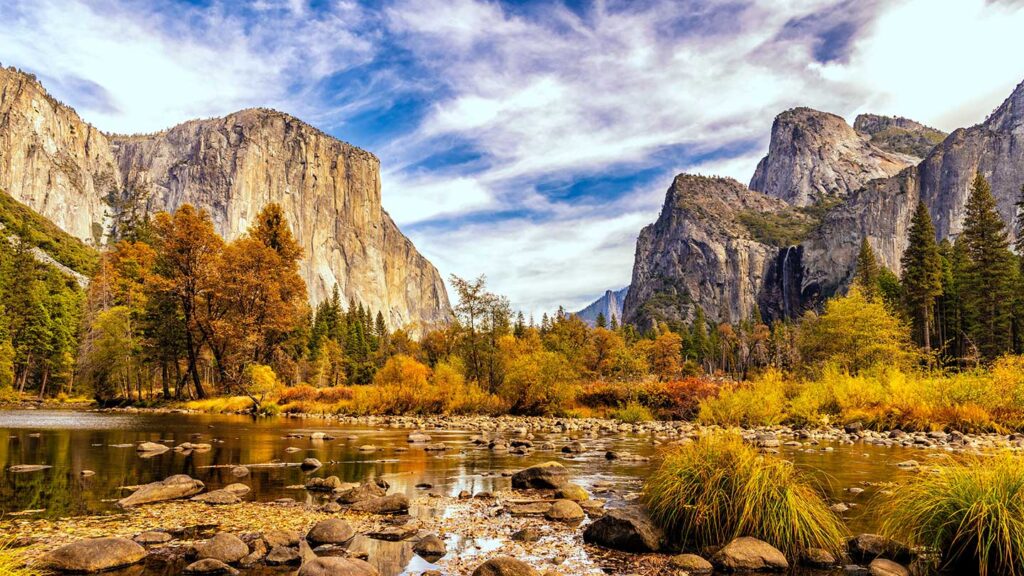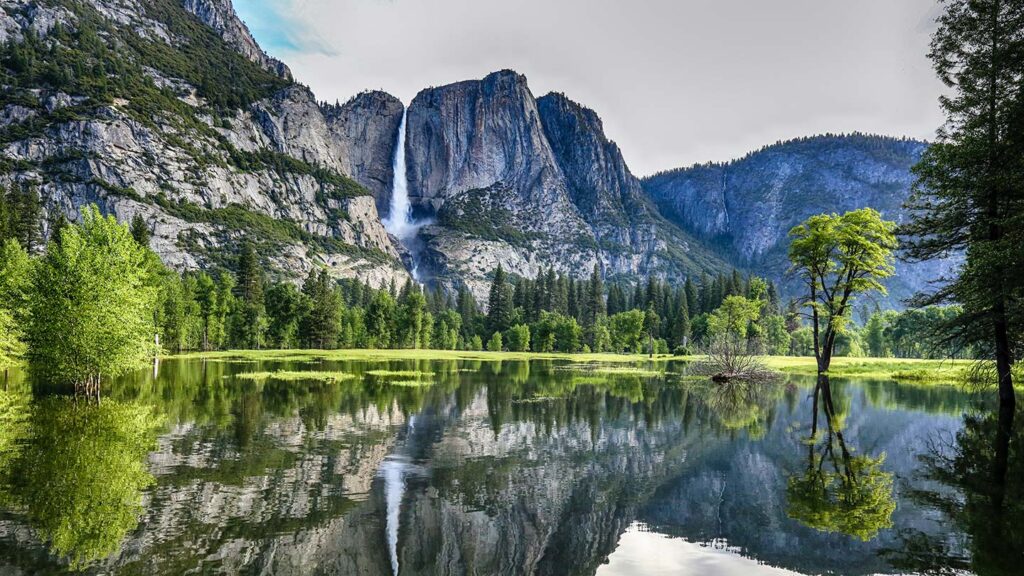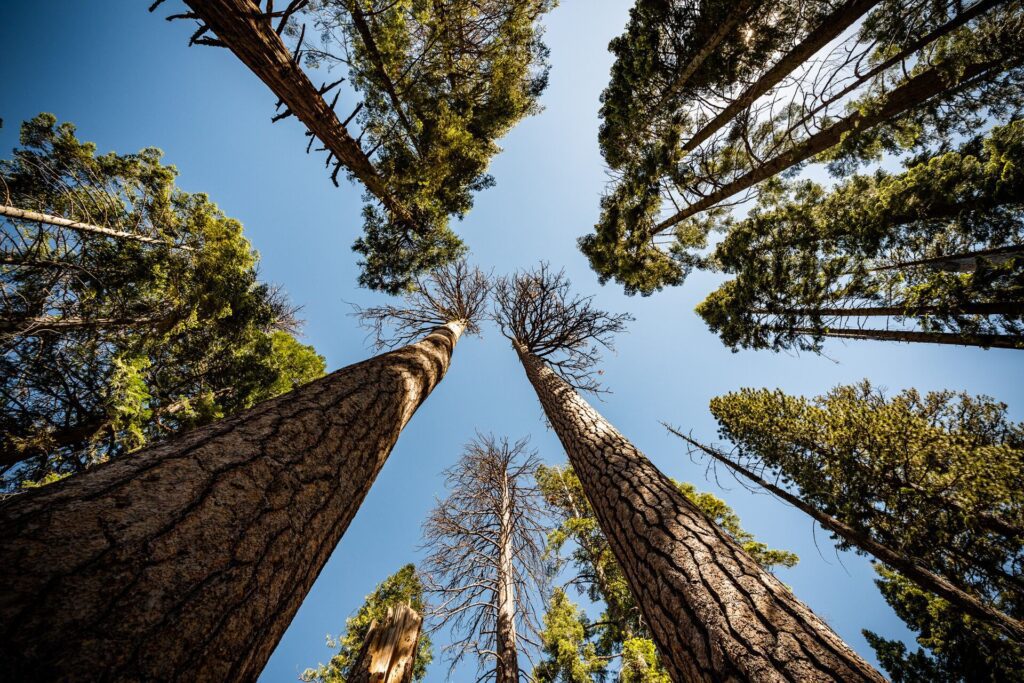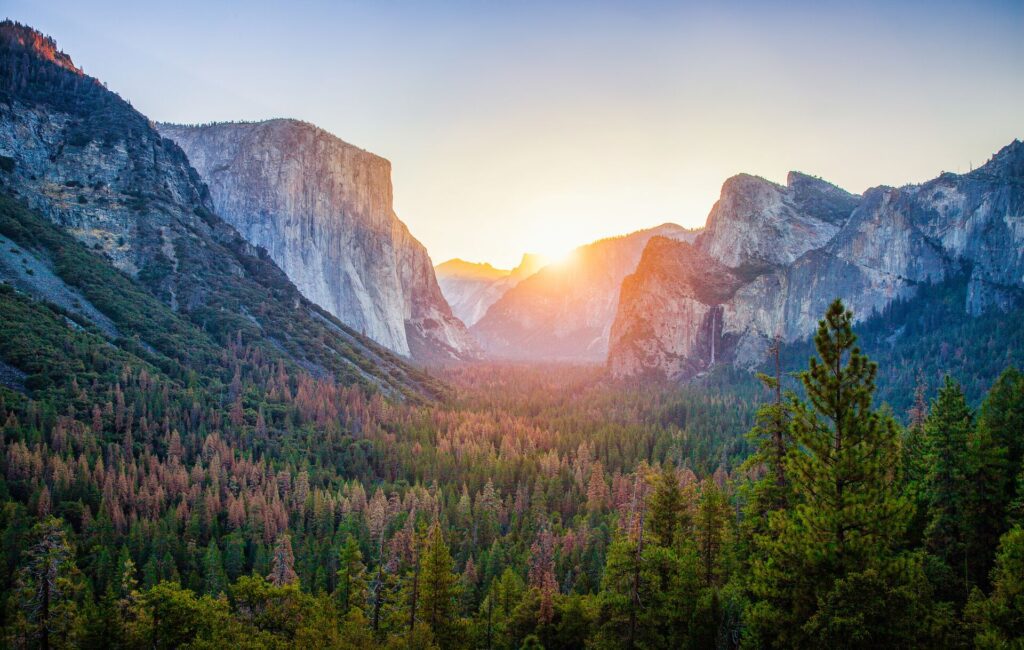Recently updated on July 25th, 2025 at 11:30 am
Yosemite National Park is always worth the trip – but deciding when you go makes all the difference. From roaring waterfalls in spring to golden foliage in fall, each season presents a totally different experience. This guide breaks down the best time to visit the Yosemite Valley, and what to expect in every season, from weather and crowds to trail access and top highlights. Plus we’ll touch on when not to go and how long to stay.
1. What is the best month to visit Yosemite?


If you want to see the park’s famous waterfalls at their peak, May is the best month to visit Yosemite National Park. In its spring prime all the trails in the valley are open, wildflowers are blooming, and the summer crowds haven’t quite arrived. The next best time of year – or a very close second – is September, when the weather is still warm, trails and open, and summer crowds start to disappear. Either month is a sweet spot because you’ll avoid winter closures and summer heat.
2. When to visit Yosemite: seasonal breakdown
Spring (March – May)


Spring in Yosemite means melting snow, gushing rivers, and waterfalls in full force. The landscape wakes up and returns to life from March to May, as temperatures climb steadily to between 50-70°F (10-21°C). Wildflowers begin blooming in lower elevations, and wildlife becomes more active again.
As we mentioned, May is perhaps the best month. It’s a great time to visit as by then, most valley trails are open plus waterfalls like Yosemite Falls and Bridalveil Fall are roaring. The downside? High-elevation roads such as the Tioga Pass and Glacier Point often remain closed until late May.
Spring is a great time for photography, hiking, and sightseeing. Be sure to pack layers, as weather can shift quickly from sun to snow to rain.
READ NEXT: Yellowstone vs Yosemite: which US national park should you visit?
Tour not found.Summer (June – August)
The summer months are Yosemite’s busiest season – but it’s for good reason. From June to August, the entire park is open, including Glacier Point, Tioga Road, and Tuolumne Meadows. Days are long and dry, with temperatures often in the 70-90°F range (21-32°).
From early June the park is at its prime for hiking, camping, and exploring the High Sierra. Families and first-time visitors will find plenty of ranger programs and guided activities that make it easier to explore.
But the downside? Crowds and full parking lots. Waterfalls will start to dry up by late July, and sometimes wildfire smoke can impact air quality. In summer you’ll want to plan ahead, start each day early, and book things well in advance.
Fall (September – November)


Crisp air, colorful foliage, and fewer people – autumn is definitely one of the best times to visit Yosemite National Park. September offers full access to most areas, with warm days and cooler nights. Daily highs hover around 77-86°F (25-30°C) in the valley, and 59-68°F (1520°C) at higher elevations – it’s ideal hiking weather in Yosemite.
By October, fall colors peak in Yosemite Valley, and local wildlife is more active as animals prepare for winter. Some roads, like Tioga Pass and Glacier Point, may begin closing by late October, depending on snow. November is quieter but colder, with limited services.
Tour not found.Winter (December – February)
Snow blankets much of the landscape in winter, leaving Yosemite quiet and magical (for those that don’t mind the cold!). From December to February, Yosemite Valley stays open with daytime highs around 40-54°F (5012°C) and lows dipping to 20°F (-6°C) or less.
Higher elevations are completely snow-covered and inaccessible by car. Tioga Road and Glacier Point Road close for the season. It’s the best time for snowshoeing, cross-country skiing, or visiting Badger Pass Ski Area. Iconic spots like El Capitan and Bridalveil Fall are still visible, often framed by snow.
As you’d expect, crowds are low and unpredictable weather can cause issues. Check the conditions before heading in.
READ NEXT: 10 best national Parks to visit in April
3. Is Yosemite better in spring or fall?


It’s a tough question to answer. Spring and fall both offer incredible and unique Yosemite experiences, but it depends what you want from your national park visit. If you want drama and energy, go in spring. If you prefer calm, colorful landscapes, choose fall.
Spring (especially May) is all about power and landscape waking up – waterfalls are at full force, rivers are rushing, and wildflowers are in bloom. It’s ideal for first-time visitors and photographers.
Fall is quieter and more relaxed. Trails are dry, but the park glows with fall colors – especially in October.
Tour not found.4. When not to go to Yosemite?


The three most difficult times to visit Yosemite are late summer, the winter months, and any holiday weekends.
From late July through mid-August is peak tourist season – you can expect heavy traffic, packed trails, full parking lots, and limited lodging availability. Waterfalls have mostly dried up by then, and daytime temperatures in the Valley often hit 95°F (35°C) or higher. Wildfire season also peaks in late summer, which can lead to smoke, poor air quality, or even temporary closures.
Similarly, holiday weekends such as Memorial Day, 4th of July, and Labor Day are best avoided (unless you’ve booked far in advance). For obvious reasons, the park gets busy!
Finally, the depths of winter – January and February – are challenging. Snowstorms can close roads, and many trails are closed or inaccessible. Only go if you like snowshoeing, skiing, or cold-weather travel.
READ NEXT: We asked, you answered: these are the best National Parks in the USA
5. How many days do you need in Yosemite?
For most travelers, 2 to 4 days in Yosemite is ideal. One day gives you a quick look at Yosemite Valley highlights like El Capitan, Bridalveil Fall, and Tunnel View. Two to three days let you explore top hikes like the Mist Trail, visit Glacier Point (when open), and venture to Mariposa Grove or Tuolumne Meadows.
With four days or more, you can explore the High Sierra, do longer hikes, or simply enjoy the park at a slower pace.
That’s our seasonal guide on the best time to visit Yosemite National Park. Any tips to add? Leave us a comment...